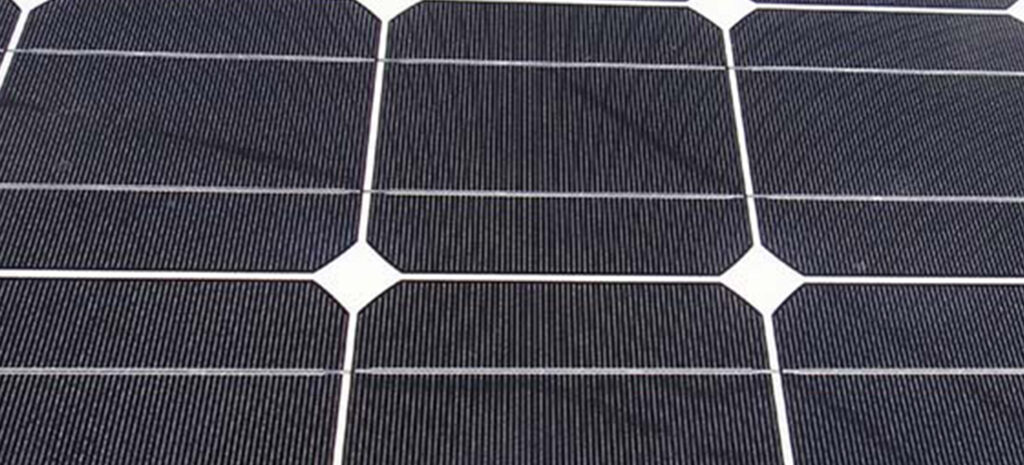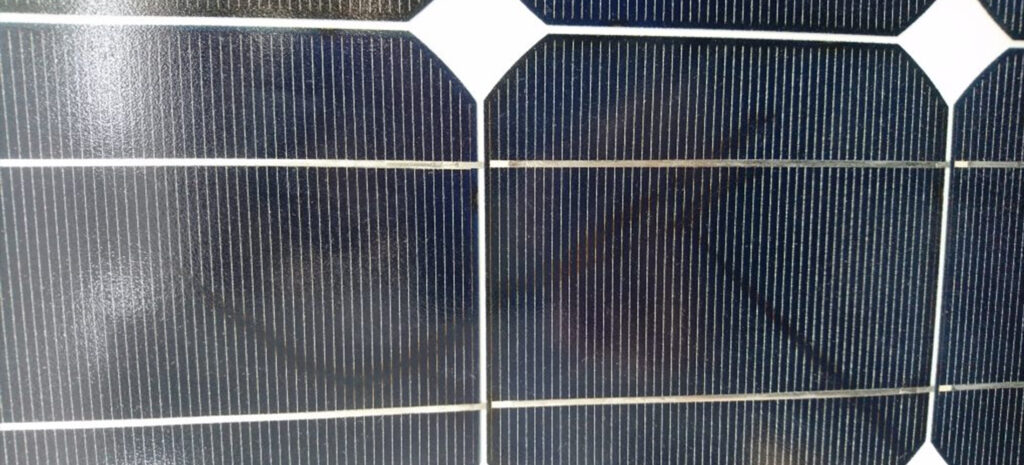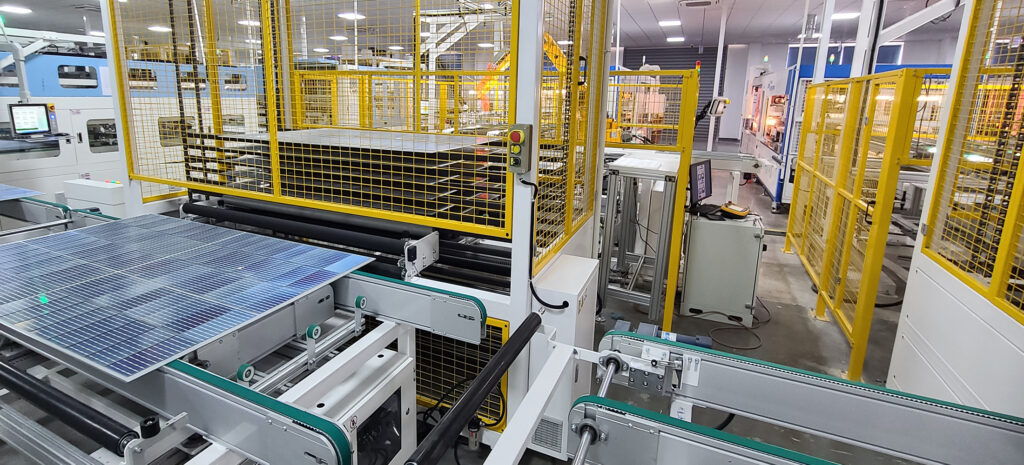The vertical and horizontal distribution of dark lines as wide as fingers on photovoltaic modules has attracted the attention of many manufacturers. Because this black or white linear pattern looks like a trace left by a snail crawling over, it is commonly known as a snail pattern. The snail pattern greatly affects the appearance of the module, and the reason for this phenomenon is that the surface of the cell is oxidized.

The modules are protected by the backplane and frame silicone. How are the cells oxidized? And the shape of the snail pattern is very special. How did this shape like a snail’s crawling mark appear?

The occurrence mechanism is mainly caused by three conditions: namely the occurrence of cracks, moisture penetration and sunlight exposure.
- Cracks occur in the battery cells, and moisture penetrates into the cracks through the resin backplane and packaging materials.
- The moisture infiltrated into the cracks reacts with the silver forming the finger electrodes (thin electrodes) of the battery cell, and the silver ions diffuse in the encapsulation material.
- In this state, when sunlight hits the panel, silver ions chemically react with the additives contained in the encapsulation material to generate silver oxide and silver sulfide. As a result, a black or white linear pattern is formed along the crack.
When analyzing the modules with the snail pattern, we found that the pattern is generally accompanied by the crack of the cell, and the cell crack in the snail pattern can be clearly seen in the EL imaging. Although this kind of crack does not seem to have a great impact on the power attenuation of the module, the crack of the cell itself has an impact on the power generation, which will prevent the current from flowing from the finger electrode to the bus bar.

According to reports, if the crack reaches 8% of the surface area of the battery, it will have a negative impact on its output, and if the broken part of the battery reaches 12%, the output will decrease linearly relative to the fracture area. Some analysis reports pointed out that the snail pattern itself has no effect on the attenuation of the component, because the area where the snail pattern appears occupies a very small part of the entire component, so it has little effect on the light transmittance. In the peeling analysis of the snail pattern, it can be found that the cell itself is not discolored, and the discoloration position is located at the junction of the silver paste and the packaging material EVA.
The appearance of the snail pattern is a comprehensive process. Factors such as additives in the EVA film, the composition of the silver paste on the surface of the cell, the cracking of the cell, and the catalysis of water in the system will all promote the formation of the snail pattern. The appearance of the snail pattern phenomenon is not inevitable, but has its accidental triggering factors, which also explains the phenomenon that not all modules in the same batch of modules will necessarily appear.

Modules manufacturers will go through at least two EL imaging inspections when the components leave the factory, and will not deliver the products until there are no cracks in the test. However, due to the inevitable impact or vibration on the components during transportation, especially during installation, this impact reaches the battery through the frame, glass, backplane, and packaging materials, causing tiny cracks in the fragile battery and burying snails. The hidden danger of tattoos.

Maysun Solar is a professional photovoltaic module manufacturer. From manufacturing to installation, we pay great attention to the quality of photovoltaic modules, and makes every effort to avoid potential hidden dangers of photovoltaic modules. You can contact us anytime for a quote.



